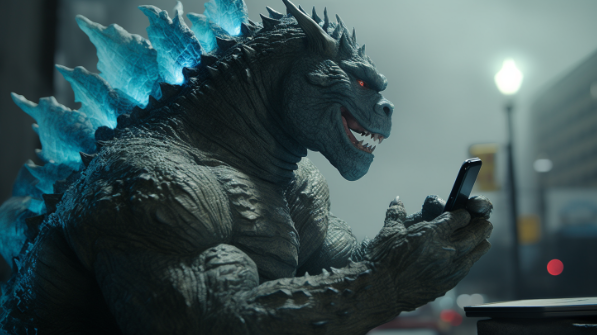Automated trading systems powered by artificial intelligence (AI) have become increasingly popular over the past decade. Also known as algorithmic trading systems or robotic trading systems, these AI bots can analyze market data, identify trading opportunities, and execute trades faster than human traders. But can these machines actually make money in the financial markets consistently? There are good arguments on both sides.
The Case for Profitable AI Trading
Proponents of AI trading bots argue that they have some key advantages over human traders that improve profitability:
-
Speed – AI trading systems can react to new data and events in milliseconds, allowing them to get into and out of positions faster than humans. This speed can allow them to capitalize on very short-term price moves that human traders would miss.
-
No Emotions – Unlike people, an AI cryptocurrency bot sticks rigidly to their trading rules without concern about fear, greed, or other emotions influencing decisions. Their discipline can prevent overtrading and irrational moves that often hurt human traders.
-
Tirelessness – Algorithms can trade almost continuously without breaks, allowing them to spot more opportunities. Humans, in contrast, can only stare at screens and analyze data for so long before mental fatigue sets in.
-
More Data Analysis – AI algorithms can process vast amounts of market and pricing data that would overwhelm human analytical capabilities. This “big data” analysis can potentially give the bots better predictive signals.
-
Cost Savings – Once developed, trading bots can be cheaper to run than traditional fund managers because they do not require large salaries and bonuses. These cost savings mean more profits can go to investors.
While these strengths make a compelling case, AI trading systems do have some weaknesses to consider.
The Challenges for Profitable AI Trading
Critics argue that despite their advantages, trading bots have had mixed results and several drawbacks:
-
Overoptimization – Developing algorithms that work on historical data is relatively easy. However, markets evolve and previously profitable strategies often stop working. AI bots can run into trouble when market dynamics change.
-
Hidden risks – Bots can downplay or miss risks in very complex markets,structured products, or assets with little historical data. What the AI models perceive as great opportunities can turn out to carry large risks not evident in the data.
-
Programming mistakes – All software has bugs, and bots are no different. Subtle coding errors could lead to major losses in fast-paced trading. While easier to fix than human nature, debugging algorithms can be challenging.
-
Server outages – High-frequency AI trading systems are extremely dependent on internet connectivity and computing infrastructure. Even brief disconnects or processing hiccups could prevent the algorithms from getting orders executed during volatile periods.
-
Poor problem formulation – Developers need to define clear objectives and constraints for AI optimization. Suboptimal math formulations that fail to capture crucial real-world nuances could produce strategies that fall apart in live trading.
-
Overfitting – Just like in machine learning applied to other domains, trading algorithms can tune themselves so tightly to historical data that they lose flexibility to adapt to new market conditions. This overfitting leads to poor performance on out-of-sample data.
-
Arms race – If too many traders adopt similar AI strategies, their own predictive success could suffer, and returns diminish. Profitable algorithms tend to remain profitable only until competitors catch up.
Ultimately, the debate over AI trading systems mirrors arguments about active investment management in general. While algorithms have some edges over human discretion and emotions, their performance relies heavily on the skills of their designers. Just like human traders, even the most sophisticated bots struggle to consistently outperform the broader market as more competitors enter the fray. However, AI will only grow more prevalent in finance with time.
The Outlook for AI Trading Performance
Expect the development of AI trading platforms to continue growing for the foreseeable future. Machine learning and neural networks are incredible pattern recognition engines well suited to quantitative finance problems, even if not a magical path to easy profits. The strengths and weaknesses of algorithmic trading systems largely depend on the context in which they are applied:
– Shorter-term trading strategies likely benefit more from the speed and tireless analysis capabilities of AI. The efficiency gains over humans can be substantial for high frequency tactics.
– Longer-term investing approaches probably do not depend as directly on millisecond reaction times or handling billions of data points. Accordingly, they may show less advantage relative to human portfolio managers.
– Simpler quantitative rules-based strategies tend to be easier to automate effectively compared to more qualitative approaches. Factors and signals with clear historical precedence work best rather than detecting complex emergent patterns requiring human-like evaluation.
– Less efficient assets like small cap stocks or emerging market currencies provide more opportunities for algorithms to exploit inefficiencies before crowding out profits. Highly quantitative and efficient markets like large cap US stocks offer less fertile grounds for new AI trading signals.
Conclusion
Overall, while AI trading algorithms certainly carry risks like any other market practice, they are likely here to stay and will probably play an increasing role in financial markets. Rather than resisting automation, the most pragmatic outlook may involve finding ways to best synthesize human and machine skillsets for better investment process quality and risk management monitoring going forward. With the right checks and balances, AI presents opportunities to enhance trading performance rather than just replace human traders entirely in the name of cost cutting. There are still some activities machines do better, faster, and more accurately – but also roles for human judgment where algorithms falter. Finding the right mix leveraging strengths of both constitutes the future of adaptive intelligent systems for trader developers and investors.
